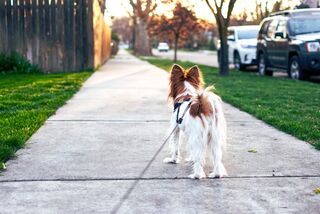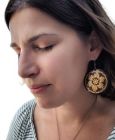Grief
What Might Have Been: Grief and Gratitude in a Pandemic
How researchers try to answer the question, "What would have happened if ... ?"
Posted May 20, 2020
These days I feel like the "two steps forward, one step back" nature of life is amplified in a collective manner. One day I see signs of our shared humanity and empathy towards the suffering and hardship of others, and the next I am on a Zoom webinar that gets “bombed” by a garbage person showing child pornography. One day my son learns to climb a tree, Huck-Finn style, and the next I get an email saying his summer camp has been canceled.

We are in a collective state of grief, which is expressed in many ways. Grief for our children and their development; grief for our family members and their health; and grief for our plans and our future selves. We grieve what might have been—which feels more like what “should have” been—and we feel cheated, angry, and frustrated. And if we are lucky, particularly if we’ve had the benefit of some cognitive-behavioral therapy at some point in our lives, we know that the siren song of “should” is the foundation for the full gamut of negative emotions (i.e., anxiety, rumination, guilt, worthlessness) and we remind ourselves of what we have now, and focus on gratitude for what is.
And this grief—the gap between what could have been and what is—reminds me of the foundational conceptual framework for investigating causal relationships: the counterfactual. As a concept, the counterfactual represents “what might have been” (the counter-to-the-facts) given “what did happen” (the facts). Imagine that classic piece of American cinema, Twins, (or, if you must, that far lesser film on a similar theme, Sliding Doors), but with more math and less Danny DeVito.
The counterfactual is the foundation for saying that experimental studies (like randomized controlled trials) tell us if something (say, a new drug) does what we think it does (say, lowers cholesterol).
Why do we say that experimental studies illustrate causal effects?
- Experimental designs randomize people to some exposure (or treatments). In the case of a randomized controlled trial, one exposure is a placebo, and the other is some active drug. The process of randomization means that whether or not a given person gets the treatment or the placebo is independent of their characteristics (i.e., independent of how old they are, their health history, their behaviors, their genetics). [Slight aside: Randomization is important because despite the prolific use of the term in the parlance of our times, few things that happen to us in real life are actually “random.” Rather, most of our experiences are correlated with where we live, where we work, and who we are. That means that if we want to know if something you do in your daily life causes some health outcome in your future, we have to deal with all these correlated factors that are in play. A longer discussion for another time.]
- Experimental designs create two possible worlds: The world of the treatment and the world of the placebo. These two worlds are—on average—identical except for the one difference that you (the researcher) imposed on them: one got the treatment and the other got the placebo. Randomization creates two groups that are so similar (except for the treatment vs. placebo), we say they are “exchangeable.” That is, we say that the experiences of the “treatment” group represent what would have happened to the people who got the placebo if the people in the placebo group had instead gotten the treatment. That we could "exchange" the people who happen to get randomized to the treatment for the people who happen to get randomized to the placebo and our experiment would produce the same effect.
Why is this concept useful in today’s situation? Because for any person (or any decision) we can only observe one state of the world at a time. For example, when it comes to controlling the spread of COVID-19, we can only observe if a person wore (or didn’t wear) a mask when they went into a store. They didn’t simultaneously do both. We can only observe if a community opens its restaurants—or it doesn’t. We don’t get to eat our cake and have it too.

And to bring this back to our collective grief, we can each catalog what we have lost in this pandemic.
Some of these losses are universal: hours spent inside, time lost with friends and family, and a (perhaps false) sense of security about the way the world works.
Some of these losses are not: the lost jobs, lost wages, and lost lives. These losses are disproportionately being borne by people who already had less: less job security, less financial resources, less independence, less health. This is an augmentation of what happens in the US every day, as I’ve written about previously.
But the point is, it is easy to over-weight "what might (should) have been" when it is so hard to see what was gained from those losses. We can look forward to* many months of reports from “data scientists” producing model after model seeking to quantify the impact of the stay-home orders. These models will seek to quantify what was gained by estimating “what might have been” had we not endured these losses.
But those gains—even if they turn out to be overwhelmingly positive—will likely never feel as real as the losses do now. And so it goes (RIP Kurt).
*I cringe to think of how COVID-19 is going to dominate academic research, both within public health and beyond, for years to come. It is important, but I don't think I'm alone in being ready to move on to something new.
References
Margaret Stroebe. The Poetry of Grief: Beyond Scientific Portrayal. Omega (Westport). 2018 Nov;78(1):67-96. doi: 10.1177/0030222818792706. Epub 2018 Aug 8.
Ruth M J Byrne. Counterfactual Thought. 2016;67:135-57. doi: 10.1146/annurev-psych-122414-033249
David R. Williams and Lisa A. Cooper. COVID-19 and Health Equity—A New Kind of “Herd Immunity”JAMA. Published online May 11, 2020. doi:10.1001/jama.2020.8051
George Maldonado. The Role of Counterfactual Theory in Causal Reasoning. 2016 Oct;26(10):681-682. doi: 10.1016/j.annepidem.2016.08.017.
Gregg C Fonarow. Randomization-There Is No Substitute. JAMA Cardiol. 2016 Sep 1;1(6):633-5. doi: 10.1001/jamacardio.2016.1792.


